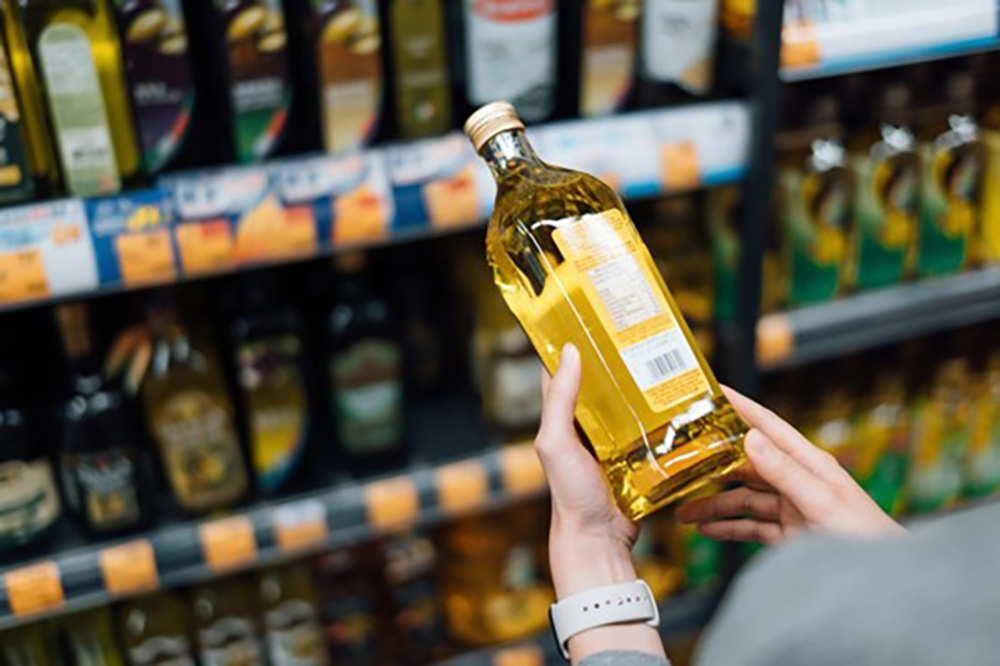
购物者可能需要为高油价做好准备。具体来说,就是橄榄油价格。
据英国《金融时报》报道,由于西班牙和意大利等主要食用油生产国去年遭遇干旱,食用油价格自去年6月以来上涨了60%,已经达到创纪录水平。
2023年降雨量持续减少,这对今年的收成来说是个坏兆头。上个月是西班牙本世纪第二干旱的三月,而本月将是该国有史以来最干旱的四月。
大宗商品追踪机构Mintec的植物油分析师凯尔·霍兰德向英国《金融时报》表示:“如果近期仍没有降雨,我们将再次出现歉收。”据路透社报道,西班牙出口商预计,与2021年的产量相比,今年全球橄榄油供应量将下降10%。
不断上涨的橄榄油价格对其他在食谱中使用橄榄油的商品产生了连锁反应。根据彭博社及其“玛格丽特披萨指数”,在橄榄油和其他披萨原料价格上涨的推动下,自制披萨的价格同比上涨22.5%。
不仅是披萨价格上涨:根据彭博社的计算,由于橄榄油、蔬菜和大米的价格上涨,制作海鲜饭的成本同比上涨了18.5%。
西班牙首相佩德罗·桑切斯(Pedro Sánchez)去年将橄榄油的增值税从10%降至5%,这是该国基本必需品减税措施的一部分。
食用油短缺
去年2月俄乌冲突爆发后,食用油价格飙升。乌克兰是世界上最大的葵花籽油生产国之一,供应中断导致葵花籽油及其替代品的价格在全球范围内飙升。
这种短缺产生了全球性的影响。英国超市短暂实行了限购,而印度和尼日利亚的街头小吃摊贩则放弃了提供油炸小吃。
食用油价格飙升也促使各国政府考虑采取保护主义政策。印度尼西亚在2022年和2023年期间短暂限制棕榈油出口,以确保国内供应,担心食用油价格飙升会引起公众不满。
幸运的是,食用油价格整体呈下降趋势,联合国粮食及农业组织报告称,其油籽、油粕和植物油的价格指数在3月份均有所下降,其中油籽价格跌至2021年初以来的最低水平。
食品价格也在下降,但高昂的燃料、劳动力和运输成本,以及利润率,使杂货店的价格居高不下。而且各国领导人对物价很快开始下降也不抱太大希望。
法国总统埃马纽埃尔·马克龙在接受《巴黎人报》采访时表示:“坦白地说,食品价格在夏季结束前仍将居高不下。”(财富中文网)
译者:中慧言-王芳
购物者可能需要为高油价做好准备。具体来说,就是橄榄油价格。
据英国《金融时报》报道,由于西班牙和意大利等主要食用油生产国去年遭遇干旱,食用油价格自去年6月以来上涨了60%,已经达到创纪录水平。
2023年降雨量持续减少,这对今年的收成来说是个坏兆头。上个月是西班牙本世纪第二干旱的三月,而本月将是该国有史以来最干旱的四月。
大宗商品追踪机构Mintec的植物油分析师凯尔·霍兰德向英国《金融时报》表示:“如果近期仍没有降雨,我们将再次出现歉收。”据路透社报道,西班牙出口商预计,与2021年的产量相比,今年全球橄榄油供应量将下降10%。
不断上涨的橄榄油价格对其他在食谱中使用橄榄油的商品产生了连锁反应。根据彭博社及其“玛格丽特披萨指数”,在橄榄油和其他披萨原料价格上涨的推动下,自制披萨的价格同比上涨22.5%。
不仅是披萨价格上涨:根据彭博社的计算,由于橄榄油、蔬菜和大米的价格上涨,制作海鲜饭的成本同比上涨了18.5%。
西班牙首相佩德罗·桑切斯(Pedro Sánchez)去年将橄榄油的增值税从10%降至5%,这是该国基本必需品减税措施的一部分。
食用油短缺
去年2月俄乌冲突爆发后,食用油价格飙升。乌克兰是世界上最大的葵花籽油生产国之一,供应中断导致葵花籽油及其替代品的价格在全球范围内飙升。
这种短缺产生了全球性的影响。英国超市短暂实行了限购,而印度和尼日利亚的街头小吃摊贩则放弃了提供油炸小吃。
食用油价格飙升也促使各国政府考虑采取保护主义政策。印度尼西亚在2022年和2023年期间短暂限制棕榈油出口,以确保国内供应,担心食用油价格飙升会引起公众不满。
幸运的是,食用油价格整体呈下降趋势,联合国粮食及农业组织报告称,其油籽、油粕和植物油的价格指数在3月份均有所下降,其中油籽价格跌至2021年初以来的最低水平。
食品价格也在下降,但高昂的燃料、劳动力和运输成本,以及利润率,使杂货店的价格居高不下。而且各国领导人对物价很快开始下降也不抱太大希望。
法国总统埃马纽埃尔·马克龙在接受《巴黎人报》采访时表示:“坦白地说,食品价格在夏季结束前仍将居高不下。”(财富中文网)
译者:中慧言-王芳
Shoppers may need to prepare for high oil prices. Specifically, olive oil prices.
Prices of the cooking oil are already at record levels, thanks to a drought last year in major producers like Spain and Italy, leading to a 60% increase since last June, according to the Financial Times.
The lack of rainfall has continued in 2023, which bodes poorly for this year’s harvest. Last month was Spain’s second-driest March this century, and this month is set to be the country’s driest April ever.
“If it does not rain very soon, we are going to have a poor crop again,” Kyle Holland, a vegetable oils analyst at commodity tracker Mintec, told the Financial Times. Spanish exporters expect a 10% drop in global olive oil supplies this year, compared with production in 2021, according to Reuters.
The increasing price of olive oil has had a knock-on effect on other goods that use it in their recipes. The price of a homemade pizza is up 22.5% year on year, driven by increases in the price of olive oil and other pizza ingredients, according to Bloomberg and its “Pizza Margherita Index.”
It’s not just pizza: The cost of making paella, according to Bloomberg’s calculations, is up 18.5% year on year, thanks to higher prices for olive oil, vegetables, and rice.
Spanish prime minister Pedro Sánchez reduced the value-added tax on olive oil from 10% to 5% last year, as part of a wider set of tax cuts on basic food items.
A (cooking) oil shortage
Cooking oil prices surged in the wake of Russia’s invasion of Ukraine last February. Ukraine is one of the world’s biggest producers of sunflower oil, and the supply disruption helped send prices of sunflower oil and its alternatives surging throughout the world.
The shortage had global repercussions. U.K. supermarkets briefly rationed purchases, while street food vendors in India and Nigeria ditched fried snacks.
Surging cooking oil prices also pushed governments to consider protectionist policies. Indonesia limited palm oil exports for brief periods throughout 2022 and 2023 to help secure domestic supply, fearing public discontent as prices surge.
Fortunately, overall cooking oil prices are trending down, with the UN Food and Agriculture Organization reporting that its price indices for oilseed, oil meal, and vegetable oil all fell in March, with oilseed prices falling to their lowest level since early 2021.
Food commodity prices are falling, too, yet high fuel, labor, and transport costs, as well as profit margins, are keeping prices at the grocery store elevated. And leaders don’t have high hopes that prices will start coming down anytime soon.
“I’ll be honest, food prices will be difficult until the end of the summer,” said French President Emmanuel Macron in an interview with Le Parisien on Sunday.






